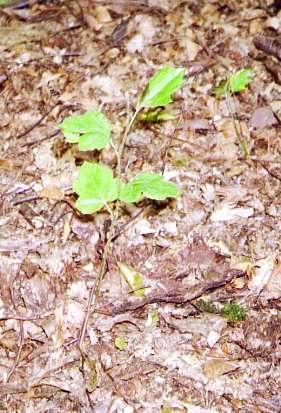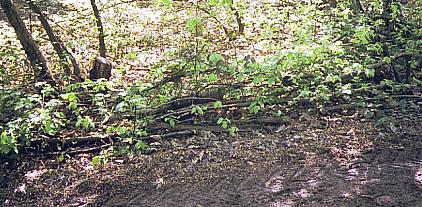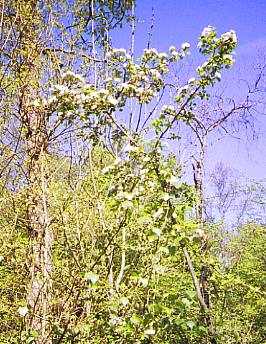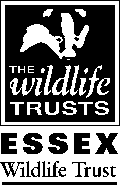Birds
There are twenty-seven species of birds that have been recorded from Pound Wood. This may not seem very many, but recording birds in a wood is much more difficult than doing it in open country like estuaries.
We have not, as yet recorded breeding birds separately, although many of those seen in the summer are undoubtedly breeding. These include the Blackcap, Chiffchaff and Willow Warbler. Although we have heard many Cuckoos, confirmation of breeding is much more difficult.
Birds of Prey include Tawny Owls which are to be heard in the evenings and night, and more recently the odd Sparrowhawk. Sparrowhawks have been making a good recovery from their great reductions in the sixties, but Essex has been one of the last counties to see them re-colonising. Woods like Pound Wood are ideal Sparrowhawk country and we do hope to see them breeding there before too long. Recently there have been single sightings of the Common Buzzard and of the Red Kite.
Some other species of note include: all three of our British Woodpeckers, the Great Spotted, Lesser Spotted and Green Woodpeckers (although there have been few sightings of the Lesser Spotted in recent years); the two other tree-climbing species: the Treecreeper and Nuthatch; Three Tits, Great, Blue and Long-Tailed; three Thrushes, Blackbird, Mistle and Song Thrush; the Wren and Wood Pigeon. All these are undoubtedly breeding, since they are to be seen and heard all through the summer, as are the Carrion Crows, Jays and Magpie.
Mammals
We have records of only a few mammals from the wood. The Grey Squirrel is by far the most conspicuous. It is common and active by day. Most of the others are only about at night. Moles are rarely seen, but their molehills are common.
The small mammals such as mice and voles have not been recorded, but they are undoubtedly there. However, there is evidence of a small, but thriving Dormouse population. When the Trust bought the wood, a party of members tried to make a tour of all parts of the wood. On passing through a storm-damaged area, we had to duck under a fallen tree. One member looked up as she ducked under and beheld a dormouse looking back at her. Since then we have had a regular Dormouse monitoring programme. We have put up special nestboxes in various parts of the wood. We do not disturb these during the breeding season, but they are examined in the autumn. A number of boxes have clearly been used by the dormice, and some have still had a dormouse in them, in one case with a family!
One mammal that will need to be monitored is the Munjac. This is a small species of deer that was introduced into this country early this century. As far as we know, there is just the one animal in the wood. However, the Trust’s experience, like that of many others, is that large populations of Muntjac can have a devastating effect on the regrowth of coppice. This animal is the only Muntjac recorded south of the A127; this main road probably has acted as a barrier to their spread south.
Plants
Plants are rather more obvious in the wood, and though we have fewer plant recorders, there are many more records. So far, we have 146 species of vascular plant recorded. This includes some 20 species of tree and shrub (including just one conifer, the Yew); three ferns and a number of more scrubby plants (such as roses, brooms and brambles). Most of these are to be found in flower in the spring, when there is more light on the ground.
The Wild Service Tree
 Pound Wood has a
thriving population of one of Britain’s most local trees, the Wild Service. This
is widely found in the wood, especially away from the edges. In our coppicing work, we deliberately
preserve these, allowing them to grow on in the newly coppiced areas. The Wild Service is commonly found
as an under-story shrub on the continent, but in Britain it is really confined to the south-east,
especially in the woods of the Rochford Hundred and the Weald in Kent.
Pound Wood has a
thriving population of one of Britain’s most local trees, the Wild Service. This
is widely found in the wood, especially away from the edges. In our coppicing work, we deliberately
preserve these, allowing them to grow on in the newly coppiced areas. The Wild Service is commonly found
as an under-story shrub on the continent, but in Britain it is really confined to the south-east,
especially in the woods of the Rochford Hundred and the Weald in Kent.
The picture to the left is of Service Tree seedlings just south of Gunpowder Plot. Here, the light is improved by the coppicing of Gunpowder Plot, and the seeds produced by the many mature trees in the area get a chance to germinate.
 Along Rostron’s
Ride, south of Gunpowder Plot, there are many, rather scrubby and much-branched
Service Trees. Those immediately adjacent to the ride have been laid to form a hedge on the eastern side
of the ride.
Along Rostron’s
Ride, south of Gunpowder Plot, there are many, rather scrubby and much-branched
Service Trees. Those immediately adjacent to the ride have been laid to form a hedge on the eastern side
of the ride.
This may be the only laid Service Tree hedge in the country!
 Woodland
Hawthorn
Woodland
Hawthorn
Another tree with a restricted distribution is the Woodland or Midland Hawthorn. This is hardly ever found outside the ancient woodlands and is a good indication that the wood has been there for some centuries at least.
The Woodland Hawthorn is superficially similar to the Common Hawthorn, but the leaves are lobed only at the tip and not at the base.
Whereas the Common Hawthorn has a single style and a single seed inside (hence the specific epithet monogyna), the Woodland Hawthorn has two styles and two seeds.
Ancient IndicatorsThere are around a hundred species of flowers and grasses to be found in the wood. Most of these are common and widespread, but some are much more restricted and are, like the Woodland Hawthorn and the Service Tree, confined to ancient woodlands. The most notable of these is the Hairy Woodrush, but others include the Wood Anemone, Pendulous Sedge, Wood Spurge, Yellow Archangel, Common Cow-Wheat, Wood Melick and Wood Millet (two grasses.) Another rather local species also found in damp patches in the wood is the Bristle Club-Rush, a rather nondescript and easily overlooked plant.
Fungi
There are some seventeen species of fungi recorded so far, including many common (and edible) species. Be warned however: do not go picking mushrooms in the wood. There are two reasons for this. One is that this is a nature reserve and we ought to let the other animals have them. The other is that, unless you really know your fungi, you may end up with more than you bargained for. Some of the more garish are perfectly edible, and some of the most inviting will make you ill! So far, we have not recorded the real killers, but there are several that will make you unwell.
Insects
The insects of Pound Wood have had very few records. We only have fifteen recorded to date. Most of these are the conspicuous species such as butterflies, but we do have records of two damselflies (the Large Red and the Common Blue) and two dragonflies (the Broad-Bodied Chaser and the Common Darter). These must have colonised the pond in Digby’s Dell since it was cleared in our first season there in 1993–94, so we are very pleased to see them.
Heath Fritillaries
Recently, English Nature approached the then Department of Environmental Sciences at the University of East London (where I worked) suggesting a project to study the Heath Fritillary Butterfly in Hockley Woods and in three other local woods. This is intended to look how the butterfly is doing in Hockley woods and the prospects for its introduction into other woods. We had identified, besides Hockley Woods, Belfairs Wood, where the butterfly once flew, Pound Wood and West Wood. All these woods have the Common Cow-Wheat growing. This is the food-plant of the Heath Fritillary Butterfly, but the butterfly needs a thriving population of the Cow-Wheat to sustain it. Pound Wood is being managed in a way which will promote the growth of the Cow-Wheat. West Wood is not managed as such, so we will have some useful comparisons.
1998 saw the introduction of the Heath Fritillary into Pound Wood. The stock came from two sites, one in Essex, and the other from Sussex. The chosen area was that under the electricity pylons (known as the Pylon Corridor or Powerline Corridor). This has been regularly coppiced by the electricty company and the current management is to cut coppice growth back on a regular basis to maintain the open habitat. The Cow-wheat is abundant here and provides the necessary food plant for the larvae.
In addition to the Pylon Corridor, the practice of coppicing encourages the growth of Cow-Wheat in the years following the coppice. This peaks after a couple of years, but then gradually reduces as the coppice regrowth begins to shade the woodland floor. Several coupes lie adjacent to the Pylon Corridor, and as the Cow-wheat sward develops, it has encouraged the butterflies to colonise them.
In July 1999, the first generation emerged. Athough the maximum seen at any on time was eight, this was good evidence that the population was established. More recently numbers have varied from peaks of around ten to several hundred.
This variation is characteristic of many species of butterfly (and many other insects). There are many reasons for the variation, but one important one is what ecologists call scramble competition. Following a good year, the butterflies lay large number of eggs which produced large numbers of caterpillars. These caterpillars will consume all the available food plants and consequently they all starve! This means that there will be few, if any, butterflies the next year. The local area may then be re-colonised from other populations where competition was not so severe. However, there is always the possibility that this might not happen, resulting in a local extinction.
Wood Ants
English Nature are also interested in the distribution of the Wood Ant in these woods. One reason is that it is possibly a predator of Heath Fritillary caterpillars. However, despite its abundance in our local woods, this ant is internationally an endangered species, more endangered than the Heath Fritillary!
In the summers of 1996 and 1997 we had project students working on the ants and the butterflies. One was studying the interactions between the Wood Ants and the Heath Fritillary caterpillars (see below), and the other the distribution and activity of the Wood Ants themselves.
An edited version of the Wood Ant study is available on this site.
Heath Fritillaries and Wood Ants
It is a curious fact that although in the UK, the Heath Fritillary is a rare butterfly and the Red Wood Ant is common; on the continent, and globally, the reverse is true. At one time, English Nature and the Essex Wildlife Trust were concerned that the Red Wood Ants, which feed on large numbers of insects, including many caterpillars, might have a deleterious effect on the Heath Fritillary. Thus, in 1997, another of my project students, Jimmy Docherty (as now seen on TV), undertook a study on this.
Jimmy experimented with captive-bred butterfly larvae, and exposed a dish of caterpillars to local Wood Ants in Pound Wood over a total of 200 encounters. He observed that the ants did not ever succeed in taking the caterpillar back to the nest. The caterpillar would typically curl up into a ball and after a few desultory attempts, the ant would withdraw. The caterpillars are covered in complex hairs which do seem to protect them against the ants. He also speculated that, in the wild, the ants would have difficulty reaching the caterpillars on their food plant because of the slipperiness of their stems.
The conclusion seems clear: the Red Wood Ant does not have any harmful effect on the Heath Fritillary. The abundance of the ants posed no problem to the proposed introduction of the Butterfly in 1998.
Ladybirds
Pound Wood does have the common Seven-spot Ladybird (Coccinella septempunctata) and Two-spot Ladybird (Adalia bipunctata). Both of these feed on aphids. However Wood Ants also feed from the Aphids, on the honeydew, and will tend these and attack any aphid predators that come to prey on them. There is one species of Ladybird, the Scarce Seven-spot Ladybird (Coccinella majalis) that is able to tolerate ant attacks, and in 1999 this was recorded, after much searching.
